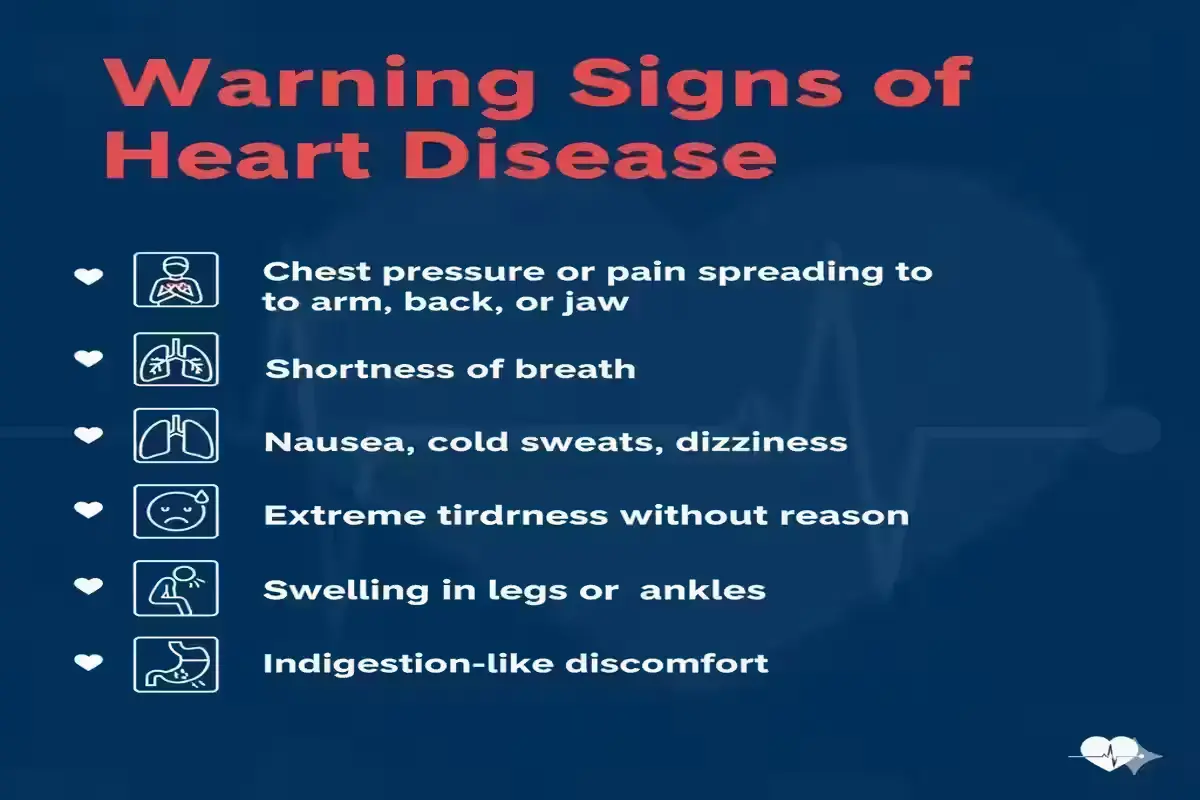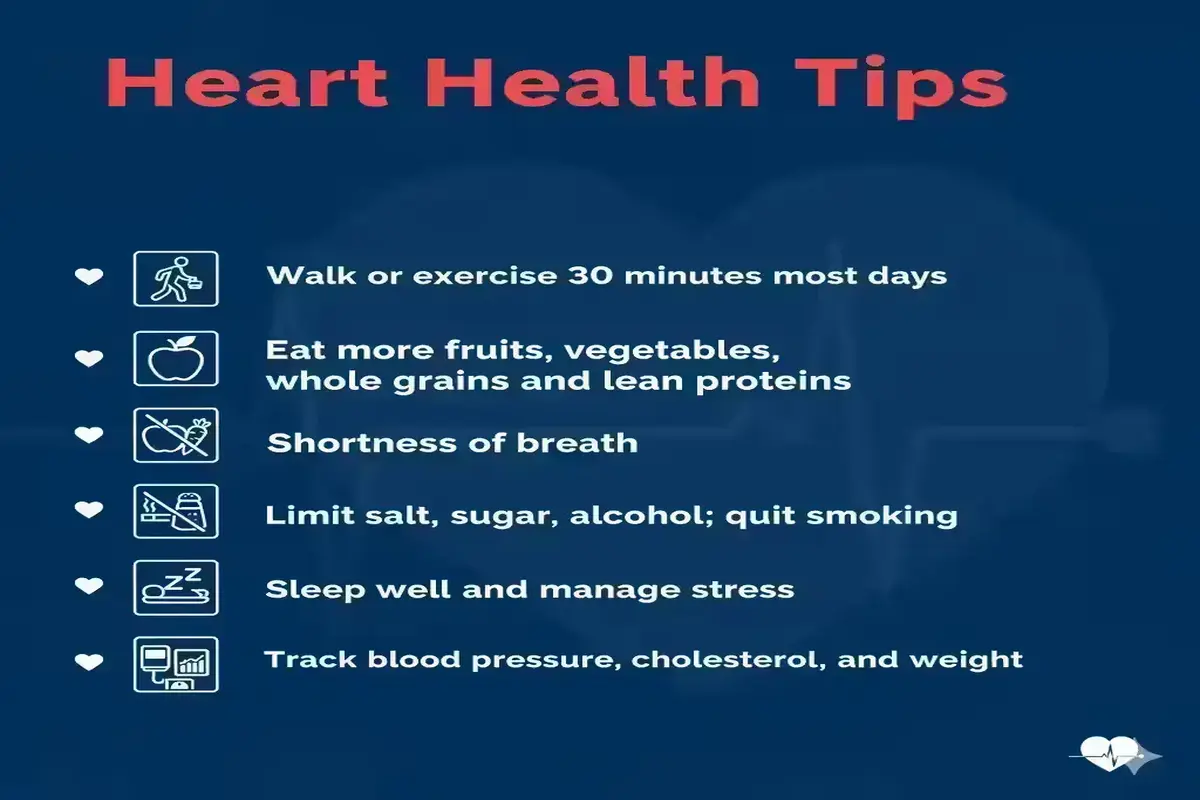“World Heart Day 2025 highlights early warning signs and why the first 90 days after a heart attack are key for recovery.”
World Heart Day 2025: Warning Signs & Heart Health Tips
World Heart Day 2025 reminds us to care for our most vital organ. Heart disease is still one of the leading causes of death worldwide, but early action and healthy habits can make a big difference.
About Heart Disease
Heart disease covers many conditions, from blocked arteries to heart failure. A heart attack happens when blood flow to the heart is cut off, causing damage.
 Warning Signs of Heart Disease
Warning Signs of Heart Disease
- Chest pressure or pain spreading to arm, back, or jaw
- Shortness of breath
- Nausea, cold sweats, dizziness
- Extreme tiredness without reason
- Swelling in legs or ankles
- Indigestion-like discomfort
The First 90 Days After a Heart Attack
The first 90 days are critical. Take medicines on time, attend checkups, follow a cardiac rehab plan, and rebuild activity slowly. This reduces the risk of another event.
 Heart Health Tips
Heart Health Tips
- Walk or exercise 30 minutes most days
- Eat more fruits, vegetables, whole grains, and lean proteins
- Limit salt, sugar, and alcohol; quit smoking
- Sleep well and manage stress
- Track blood pressure, cholesterol, and weight
Why It Matters
Acting early can prevent major problems. Ignoring symptoms increases the risk of severe damage or another heart attack. Health World Heart Day 2025 is the right time to make a small but lasting change.
Advice
If you notice warning signs of heart disease like chest pain or sudden breathlessness, seek medical help immediately. Don’t wait—it could save your life.
Disclaimer
This content is for general awareness. Always consult a qualified doctor for diagnosis and treatment.
FAQs
Q1. What is the focus of Heart Day 2025?
Raising awareness about early warning signs and safe recovery after a heart attack.
Q2. Why are the first 90 days so important?
Because the risk of another event is highest during this period.
Q3. Can women show different symptoms?
Yes, women often feel fatigue, nausea, or mild discomfort instead of strong chest pain.


 Warning Signs of Heart Disease
Warning Signs of Heart Disease Heart Health Tips
Heart Health Tips